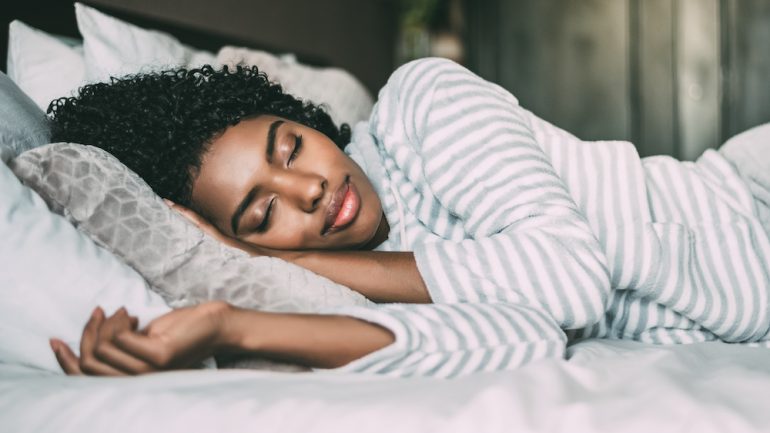There’s a component of healthy living that often gets overlooked. We know about healthy eating and exercise, but regular healthy sleep is essential, too. You spend about a third of your life in bed, so here are some tips for getting a restful night’s sleep.
How’s your mattress?
Did you know that your preferred sleep position should guide how firm your mattress should be? A mattress should contour to your body shape and allow your spine to stay straight through the night. Side and back sleepers should look for a medium-firm foam or latex mattress. Stomach sleepers should choose a mattress made from memory foam or hybrid coil-foam. If you tend to get hot when you sleep, an innerspring mattress may be the best choice.
Pillows should be soft enough to be comfortable without arching your head and neck upward.
Bed hygiene for sleep
Skin dander, hair, dust and dust mites can accumulate in and around your bed, so wash your sheets and pillowcases in hot water once per week. Every two months, use your vacuum’s hose with an upholstery attachment to thoroughly vacuum the top and sides of the mattress as well as your pillows.
Cut off food and drink
You don’t want to go to bed hungry or thirsty, but generally you should stop eating and drinking at least two hours before bed. An active stomach or bladder at night disrupts sleep.
Room temperature
Cool temperatures promote the best sleep. When you are too hot at night, sleep is fitful. The ideal temperature is around 65 degrees. Use enough covers to keep you comfortably warm but not hot.
Bedding and nightclothes
To stay comfortable at night, avoid polyester bedding or nightclothes that harbor body heat. If you tend to get hot in bed, dress lightly in cotton pajamas or T-shirts. Experiment with socks or no socks, as foot temperature can influence your comfort level.
There is some interesting evidence that weighted blankets promote good sleep. If you try one, choose a blanket that dissipates heat and adjust what you wear so you stay at a comfortable temperature.
Lighting
Humans are made to sleep in the dark. Changes in light affect our inner body clock, known as the circadian rhythm. As you near bedtime, dim the lights to help you start winding down. When it’s time to close your eyes, the light should be dim to dark. Light-blocking window coverings can block exterior lights. Leave just enough light to see should you need to get up at night.
No time for electronics
Speaking of lighting, bedtime should not be screen time. Cell phones, tablets and laptops emit blue light, the worst possible light for promoting sleep. Stop using these devices for at least 30 minutes before closing your eyes.
Reading before sleep
Reading is a great thing to do before bed, but avoid e-readers, which emit blue light. Instead, read a hardcover or paperback book, or a magazine. Reading 20 minutes before bed each night will not only make you sleepy, it will allow you to finish many books in a year!
Sounds
White noise is a great sleep inducer. If you live with ambient noise nearby — city sounds outside, a family that stays up later than you, a snoring spouse —a white noise machine, or one that creates pleasant sounds like ocean waves or falling rain, can be a huge help with dozing off. Or try listening to a podcast you like, but with the volume down so low you can barely make out the conversation. You’ll drift off easily!
The importance of a sleep routine
A regular pre-bedtime routine makes our bodies more receptive to sleep. Start winding down for sleep about the same time each night. Create a consistent routine of checking that the house is locked, setting an alarm for the morning, brushing teeth, and the like. Familiar routines induce a calm feeling of well-being that’s conducive to relaxing sleep.
Related – Mattresses by Mail—A Good Buy?


